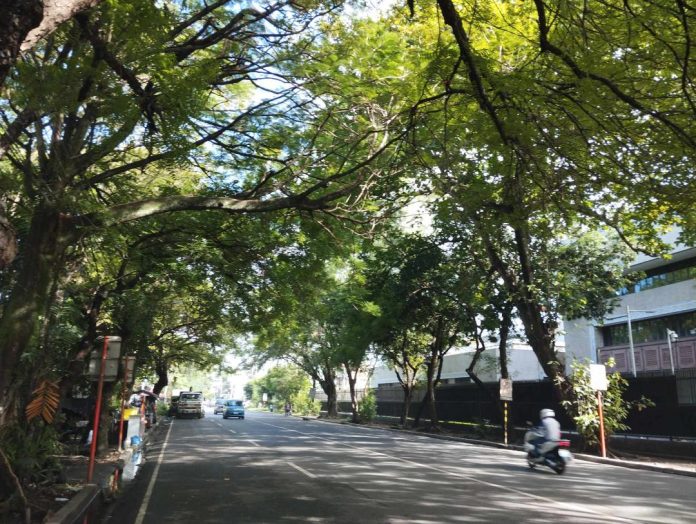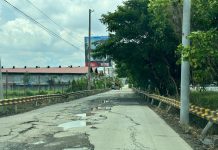Ever since the dawn of time, trees have provided human beings with two necessities for survival: food and oxygen.
Trees that border backyards, parks, streets and playgrounds in the cities provide a serene, beautiful atmosphere. Family and friends get together for outdoor activities beneath their refreshing shade. Old trees that are a significant source of community pride and historic markers may also be found in many neighborhoods.
Trees play a vital role in generating oxygen. Through the process of photosynthesis, trees absorb carbon dioxide and release the oxygen essential for human life. The US Department of Agriculture states that one-half-hectare forest “absorbs six tons of carbon dioxide and puts out four tons of oxygen. This is enough to meet the annual needs of 18 people.”
Now, here’s another piece of good news: A recent research conducted by the US Forestry Service and others has shown that trees can also lengthen one’s life.
Dr. David Nowak, an expert in urban forestry, and colleagues in the United States. Urban trees may save at least one life year in the majority of big cities and up to eight lives annually in huge metropolises like New York City, according to research conducted by the Forest Service and tree specialists of The Davey Institute.
The research focused on the importance of trees against pollution. It is common knowledge that urban particle air pollution poses a major health threat. As such, planting trees in urban areas can enhance human health and air quality by removing particulate matter, or fine particles, from the atmosphere.
Researchers examined how trees affected human health and PM2.5 concentrations – the common measure of air pollution and is used to describe pollutant levels both outdoors and indoors – in ten American cities.
The findings were astounding: in Syracuse, New York, trees removed 4.7 tons of PM2.5 yearly, whereas in Atlanta, Georgia, trees removed an incredible 64.5 tons. The analysis went one step further and calculated that the tree’s presence was worth about US$1.1 million in Syracuse to US$60.1 million in New York City – mainly from reduced human health complaints and people dying.
“Particulate matter can cause significant health effects that include premature mortality, pulmonary inflammation, accelerated atherosclerosis, and altered cardiac functions,” pointed out the study’s authors.
The presence of additional trees in urban areas generally contributes to the preservation of approximately one life annually per city. However, in New York City, this figure can go as high as 7.6 lives being saved, as a result of reduced exposure to significant levels of particulate matter, according to the study’s findings.

The advantages of trees extend beyond city dwellers. Another study, published in the American Journal of Preventive Medicine highlighted a rise in mortality associated with cardiovascular and lower respiratory tract diseases in areas affected by the emerald ash borer (EAB) infestation. The EAB is a green buprestid or jewel beetle native to north-eastern Asia that feeds on ash species.
This impact intensified as the infestation advanced, ultimately correlating the absence of healthy trees with 6,113 deaths from lower respiratory illnesses and 15,080 deaths related to cardiovascular issues. This significant figure, derived from just 15 counties in the United States, suggests that if applied nationwide, the lack of healthy trees could potentially result in millions of fatalities.
“This adds to the growing evidence that the natural environment provides major public health benefits,” the study further noted. Which also indicates that if developers cut down lots of trees and build apartments instead, then more people will die.
Trees grown in the cities have other additional health benefits, says the Davao-based Interfacing Development Interventions for Sustainability (IDIS). “Trees provide shade and help increase walkability,” IDIS pointed out “They contribute to the mental well-being of people both in schools and hospitals.
“They reduce glare and noise pollution,” IDIS further stated. “They also serve as a buffer zone or windbreak, which may protect properties from harsh conditions. Trees also provide a cooling effect that improves microclimatic comfort.”
Unknowingly, one tree is equivalent to about 10 air conditioners. According to a study conducted by Wageningen University and Research in The Netherlands, “a large tree, basking under the sun on a hot day, can cool the surrounding environment just as effectively as ten air conditioners operating simultaneously.”
That’s cool, indeed. “This astonishing cooling power, estimated at 20 to 30 kilowatts,” the university further explained, “stems from the process of evaporation through the leaves, commonly known as ‘evapotranspiration.’”
Evapotranspiration – a combination of evaporation and transpiration – is defined as “the combined processes through which water is transferred to the atmosphere from open water and ice surfaces, bare soil and vegetation that make up the Earth’s surface.”
The above findings should give Davao City an idea as to how to preserve and protect its trees growing around the heart of the city. Reports of citizen scientists in 2021, as quoted by IDIS, showed that “78% of the trees are in healthy conditions” and “58% have been observed with trimmed branches.”
The sad news: “Lower values found are not in good condition, that is, cut marks, bark wounds, uprooted, heavily pruned, decaying, dying.”
The citizen scientists had identified acacia, with a total of 72, as the most prominent non-native species. Mahogany came with 18 and kamunsil came third with 7. Among the native species, narra ranked first with 36 in total. In the second and third ranks were molave and agoho with 11 and 9, respectively.
Mango, the country’s fruit icon, was the most common fruit species. It was also the third most common of all profiled trees.
In its Bantay Kalikasan publication, IDIS noted, “While there are still a lot of trees existing in the urban areas, they are continuously being threatened to be destroyed, cut, or removed. All remaining urban trees, regardless of ecological distribution and conservation status – native, endemic, exotic, or introduced – should be protected and preserved.”
IDIS added, “Nearby street communities such as vendors, communities, traffic enforcers have high respect and value for the trees covering them from too much heat. One common issue raised is direct nailing of collaterals to the trees. Several old-aged trees were found surrounded with wastes and litter.”
But trees are grown not only in the cities. In fact, most of the trees can be found in the forest, defined as an ecosystem characterized by a dense community of trees.
Some years back, the Philippine Congress released a study that said about 123,000 hectares of the country’s forest cover are lost every year. Unless reforestation is started, the study further stated, there would be no forest left in the country by 2036 – that’s exactly 12 years from now.
Then President Benigno S. Aquino III, in his state of the nation address (SONA) in 2011, stated that most politicians use one possible solution – that of tree planting – as a photo opportunity. “They plant trees, but they do not ensure that the trees will remain standing after they leave,” he deplored.
When he was still the head of the Department of Environment and Natural Resources (DENR), Secretary Michael Defensor admitted that “only 30% of reforestation projects succeeded.”
In a Subic meeting of local executives, he told them: “People hardly recognize the economic benefits from protecting the environment. Most sabotaged the program.”
The bluntness seemed to echo an earlier study of the UN Food and Agriculture Organization, entitled Sustainable Forest Management, which stated: “Most of the (Philippines’) once rich forest are gone. Forest recovery, through natural and artificial means, never coped with the destruction rate.”
When Portuguese explorer Ferdinand Magellan “rediscovered” the Philippines in 1521, forests blanketed 95% of the country. When the Ormoc City, Leyte tragedy happened – which left 8,000 people dead – timber cover was only 18%.
“Where have all our forests gone?” asked Jethro P. Adang, the director of Davao-based Mindanao Baptist Rural Life Center. American President Theodore Roosevelt once said, “A people without children would face a hopeless future; a country without trees is almost as helpless.”







